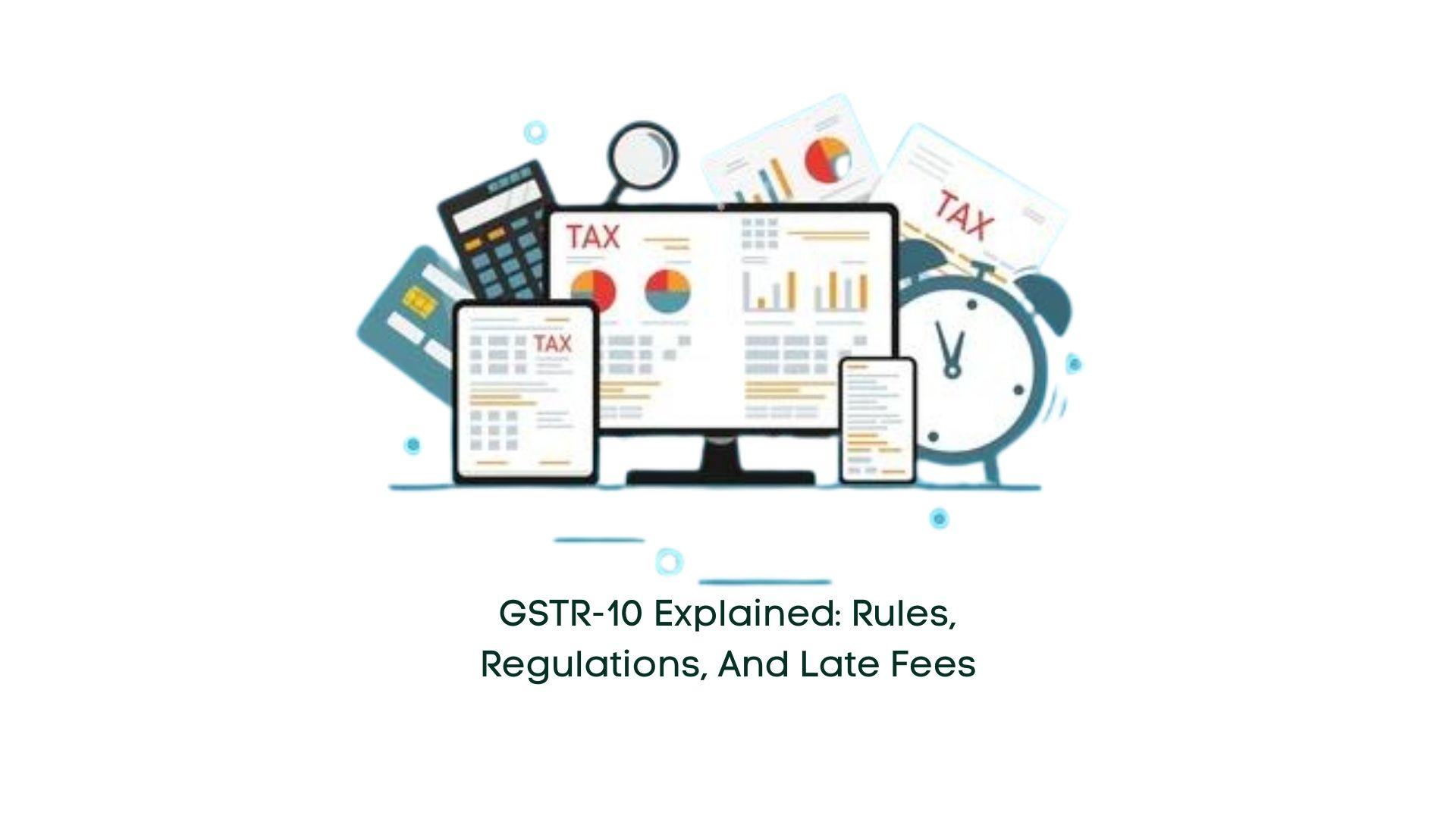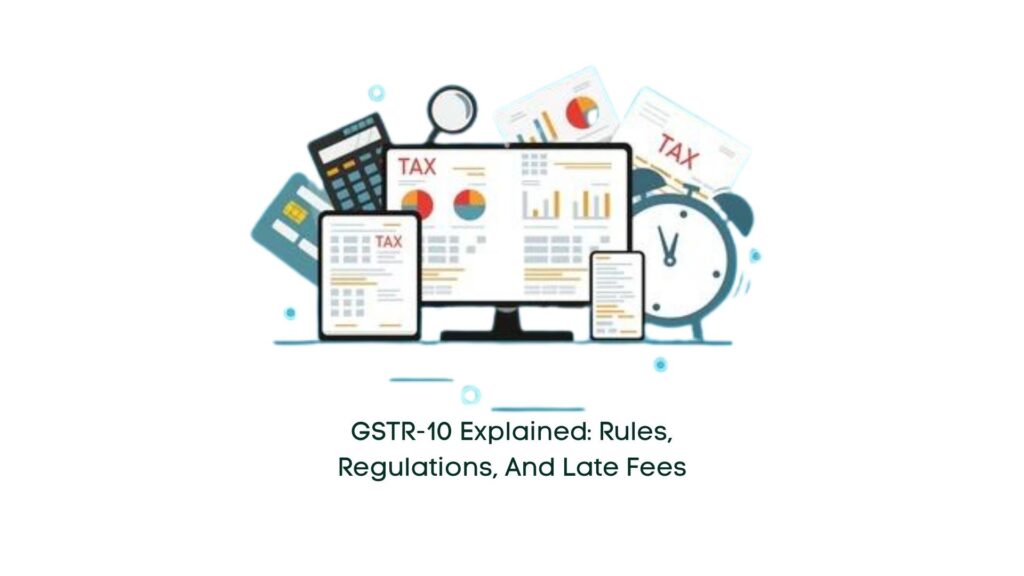
01 Mar GSTR-10 Explained: Rules, Regulations, and Late Fees

In the realm of Goods and Services Tax (GST), GSTR-10 holds significant importance for registered taxable individuals opting for the cancellation of their GST registration. This comprehensive blog delves into the intricate details surrounding GSTR-10, shedding light on its applicability, due dates, formatting requirements, and governing rules.
Exploring GSTR-10: An Overview
When a taxable individual decides to cancel or surrender their GST registration, they are mandated to file a return known as GSTR-10, which serves as their final GST return.
Deadlines and Compliance
The deadline for filing GSTR-10 is crucial and must be adhered to diligently. It is required to be filed within three months from the date of cancellation or the date of receiving the cancellation order, whichever is later. For instance, if the cancellation date is 1st October 2023 and the cancellation order was received on 10th October 2022, the GSTR-10 filing deadline would be 10th January 2024.
Determining Applicability
GSTR-10 filing is exclusively applicable to individuals whose GST registration has been revoked or voluntarily surrendered. It’s imperative to note that regular GST registrants, such as Input Service Distributors (ISD), Composition scheme taxpayers, Non-Resident Taxable Persons (NRTP), and those mandated to deduct TDS or collect TCS under specific sections of the CGST Act, are exempt from filing GSTR-10.
In-depth Sections of GSTR-10
GSTR-10 comprises 11 sections, with some sections auto-populated upon login, while others necessitate manual input. These sections encompass crucial details such as the effective date of cancellation, reference number of the cancellation order, particulars of closing stock, tax payable amount, interest, late fees, and a verification section for confirming the accuracy of the furnished particulars.
Stock Declaration Considerations
Proper declaration of stock details is essential, especially when invoices are unavailable. In such cases, estimation methodologies compliant with CGST Rule 44(3) must be followed, and certification by a practicing chartered accountant or cost accountant is mandated. Additionally, specific formulas are prescribed for calculating the value of capital goods or machinery.
Penalties for Non-compliance
Failure to file GSTR-10 within the stipulated deadline attracts penalties. Upon non-compliance, the concerned individual receives a notice and a grace period of 15 days to rectify the omission. If the return remains unfiled, tax officers may pass a final order for cancellation, incorporating the payable tax amount along with accrued interest or penalties.
Differentiating Final Return from Annual Return
It’s crucial to differentiate between the final return (GSTR-10) and the annual return (GSTR-9). While the annual return is obligatory for all registered taxpayers filing taxes under the normal scheme, the final return is exclusive to individuals whose GST registration has been canceled or surrendered.
Understanding the nuances of GSTR-10 is paramount for ensuring compliance with GST regulations, thereby avoiding penalties and maintaining statutory obligations.


No Comments